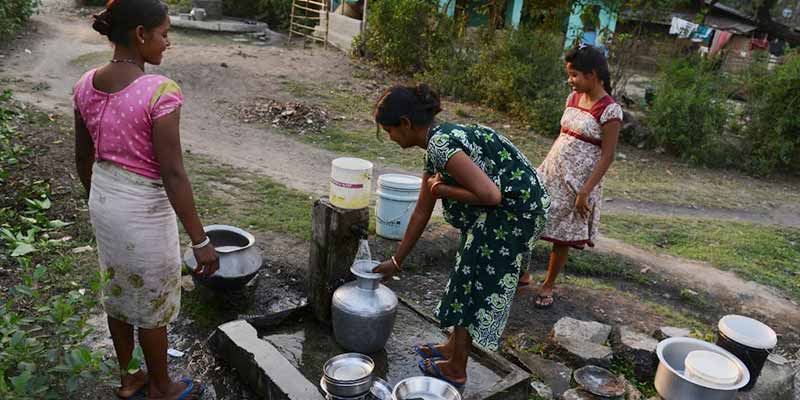- India
- Jul 17
JJM provides 1L tap connections daily
About 45 lakh tap connections have been provided under the Jal Jeevan Mission since the central government announced ‘Unlock 1’ on June 1 amid the coronavirus pandemic, a statement said.
About one lakh households are being provided with tap connections daily, it said.
For ensuring transparency, every asset created is being geo-tagged and connections are being linked with the Aadhaar card of the ‘head of the household’.
What is Jal Jeevan Mission?
The central government assistance to states for rural water supply began in 1972 with the launch of Accelerated Rural Water Supply Programme. It was renamed as National Rural Drinking Water Programme (NRDWP) in 2009.
The government restructured NRDWP into Jal Jeevan Mission in August 2019.
It aims to provide safe and adequate drinking water through individual household tap connections to every rural household in the country by 2024.
How is it being implemented?
States were requested to undertake a revalidation exercise of baseline data, as per which there are 19.04 crore rural households in the country.
Around 3.23 crore households are already provided tap connections. Remaining 15.81 crore households are to be provided with tap connections. Thus, the objective is to provide water to these households in a time-bound manner while ensuring the functionality of already provided connections.
This means 3.2 crore households have to be covered every year, that is 88,000 tap connections on a daily basis.
The key objective of the Mission is universal coverage and emphasis is on the principle of ‘equity and inclusiveness’. It means every family in the village gets tap water connection in their household and ‘none is left behind’.
Accordingly, states are giving priority to SC/ST majority populated villages, aspirational districts, villages in drought prone and desert areas and quality-affected habitations.
Special focus is given to the districts affected with Japanese Encephalitis/ Acute Encephalitis Syndrome (JE-AES) which is one of the reasons behind infant mortality in the affected districts.
Around 3.01 crore households are there in 61 JE/ AES endemic districts of Assam, Bihar, Tamil Nadu, Uttar Pradesh and West Bengal.
Potable water supply to water quality-affected habitations is also a top priority under JJM as the ill-effects of fluorosis and arsenicosis are to be reduced.
Funding for JJM
In 2020-21, a sum of Rs 23,500 crore has been allocated for the implementation of the Jal Jeevan Mission.
At present, more than Rs 8,000 crore of central funds is available with the states/UTs for the implementation of the Mission.
Besides this, in 2020-21, 50 per cent of the 15th Finance Commission grants to rural local bodies, that is, Rs 30,375 crore have been earmarked for water supply and sanitation.
JJM to provide employment
JJM is also a part of the Garib Kalyan Rojgar Abhiyan (GKRA) wherein efforts are being made to provide employment to migrant labourers by creating public infrastructure. The tentative plan is to take up work in about 25,000 villages spread across six states under implementation.
States set to achieve the target
Various states/UTs have also committed to achieve the goal of the Mission well before 2024.
In 2021, Bihar, Goa, Puducherry and Telangana have planned for complete saturation.
Similarly, Gujarat, Haryana, Himachal Pradesh, Jammu & Kashmir, Ladakh, Meghalaya, Punjab, Sikkim and Uttar Pradesh have similar plans by 2022.
Arunachal Pradesh, Karnataka, Madhya Pradesh, Manipur, Mizoram, Nagaland, Tripura and Chhattisgarh have planned for 100 per cent coverage by 2023.
Assam, Andhra Pradesh, Jharkhand, Kerala, Maharashtra, Odisha, Rajasthan, Tamil Nadu, Uttarakhand and West Bengal have planned the same by 2024.
Manorama Yearbook app is now available on Google Play Store and iOS App Store

